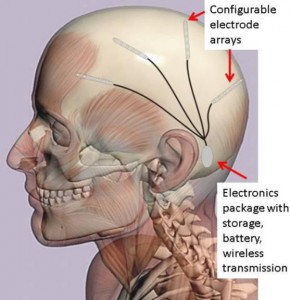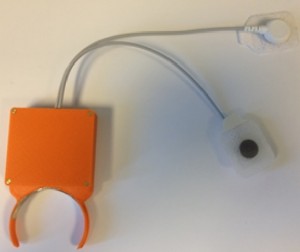A Subdermal EEG Monitor for Seizure Detection
- Category: Circuits & Systems, Medical Electronics
- Tags: bruno do valle, charles sodini
Epilepsy is a common chronic neurological disorder that affects about 1% of the world population[1]. It is characterized by repeated seizures, which are caused by an abnormal neuronal firing at the affected brain area. Although EEG has been the chief modality in the diagnosis and treatment of epileptic disorders for more than half a century, long-term recordings (days to weeks) can be obtained only in the hospital setting. Many patients, however, have intermittent seizures occurring far less often. Patients cannot come into the hospital for weeks on end in order for an event to be captured on EEG – a necessary prerequisite for making a definitive diagnosis, tailoring therapy, moving toward certain kinds of solutions such as surgery, or even affixing the true rate of events. This work aims to fill this need by proposing a subdermal, implantable 8-channel EEG monitor and seizure detector. The system will be implanted behind the patient’s ear, as shown in Figure 1, to guarantee continuous monitoring of the brain’s activity. The first step towards creating the implantable EEG monitor was to understand the challenges in recording EEGs. In order to do that, we designed a behind-the-ear-wearable device using off-the-shelf components, which is currently being tested at MGH.
The wearable prototype consists of 1 EEG channel sampled at 512 Hz with a 12-bit resolution. The data is stored in a micro SDHC flash card similar to the ones found in digital cameras. The system is housed in a package, shown in Figure 2, created by a 3D printer. One electrode is placed near the temporal lobe (close to T3 or T4), and the other one is placed on the mastoid.
- Figure 1: Implanted system overview.
- Figure 2: Wearable system prototype.
- W. C. Stacey and B. Litt, “Technology insight: neuroengineering and epilepsy – designing devices for seizure control,” Nature Clinical Practice Neurology, vol. 4, pp. 190-201, 2008. [↩]

